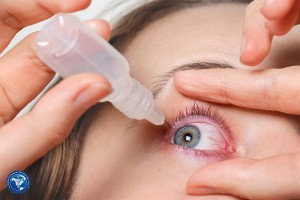What is Conjunctivitis?
The eye infection conjunctivitis, also known as pinkeye, is an inflammation of the conjunctiva. The conjunctiva is the thin clear tissue that lies over the white part of the eye and lines the inside of the eyelid.It is common in young kids. It’s usually contagious,(spresds rapidly) and breakouts can sweep through preschools and playgrounds. But even teens and adults can get pinkeye.but it’s rarely serious. Still, if you or your child shows signs of pinkeye, it’s important to see a doctor. Some kinds of pinkeye go away on their own, but others need treatment.It’s very unlikely to damage your vision, especially if you find it and treat it quickly.
Causes
The most common causes of conjunctivitis (pink eye) are
- viruses
- bacteria
- allergens
Other causes include
- chemicals
- contact lens wear
- foreign bodies in the eye (like a loose eyelash)
- indoor and outdoor air pollution caused, for example, by smoke, dust, fumes, or chemical vapors
- fungi
- ameba and parasites
It can be difficult to determine the exact cause of conjunctivitis because some symptoms may be the same no matter the cause.
Viral Conjunctivitis
- Infection of the eye caused by a virus
- Can be caused by a number of different viruses, such as adenoviruses
- Very contagious
- Sometimes can result in large outbreaks depending on the virus
Diagram showing viralconjunctivitis in human eye
Bacterial Conjunctivitis
- Infection of the eye caused by certain bacteria
- Can be caused by Staphylococcus aureus, Streptococcus pneumoniae,
Haemophilus influenzae, Moraxella catarrhalis, or, less commonly, Chlamydia trachomatis and Neisseria gonorrhoeae
- Can be spread easily, especially with certain bacteria and in certain settings
- Children with conjunctivitis without fever or behavioral changes can usually continue going to school
- More common in kids than adults
-
Observed more frequently December through April
Diagram showing bacterial conjunctivitis in human eye
Chemical conjunctivitis
Chemical conjunctivitis is caused by an irritant in the eye. Noxious chemicals, pool chlorine, and air pollution can all cause this form of pink eye. A chemical splash or exposure to a foreign object in the eye can cause chemical conjunctivitis, which is not contagious or spread by touch or from person to person.
Allergic Conjunctivitis

- The result of the body’s reaction to allergens, such as pollen from trees, plants, grasses, and weeds; dust mites; molds; dander from pets; medicines; or cosmetics
- Not contagious
- Occurs more frequently among people with other allergic conditions, such as hay fever, asthma, and eczema
- Can occur seasonally, when allergens such as pollen counts, are high
- Can also occur year-round due to indoor allergens, such as dust mites and animal dander
Conjunctivitis Caused by Irritants
- Caused by irritation from a foreign body in the eye or contact with smoke, dust, fumes, or chemicals
- Not contagious
- Can occur when contact lenses are worn longer than recommended or not cleaned properly
Symptoms and Signs
The most outwardly noticeable symptom of pink eye is the reddish or pink color of the eyes. Other symptoms include:
- Increased tearing.
- Discharge that can form a crust overnight and seem to “seal” the eye shut.
- Feeling like there is something “gritty” in the eye.
- Itchiness of the eye.
- Irritation or pain in the eye.
- Sensitivity to light.
- Swollen eyelids.
- Burning sensation in the eye.
- Contact lens discomfort.
How Is Pinkeye Diagnosed?
If any of you have pinkeye, it’s important to see your health care provider to learn what’s causing it and how to treat it. Other serious eye conditions can have similar symptoms, so if you notice severe pain, changes in eyesight, swelling around the eyes, or sensitivity to light should be examined.
If you can’t get an in-person visit, you might be able to do a “video visit” instead. Telemedicine — when patients and health care providers use technology for the remote diagnosis and treatment of some health conditions — is becoming more and more popular. Ask your health care provider if his or her practice participates in telemedicine
Treatments for Pink Eye?
Home remedies might be enough to soothe pink eye symptoms associated with colds, minor infections, or allergies. Treatment consists primarily of cleansing the eyes with artificial tears. Cool compresses can also be soothing.
To help relieve the discomfort of pink eye, apply a cool compress for 5 to 10 minutes, three to four times a day. Preservative-free artificial tears can be applied a few times a day. Never use steroid eye drops or medications from a friend without a doctor’s prescription. And be extremely careful not to share towels or washcloths with others so as not to spread an extremely contagious viral or bacteria pink eye to others. You should also be careful about using the same cloths or drops between your two eyes so as not to transfer the infection to your other eye. Discard cosmetic eye products which may have been contaminated. Do not wear contact lenses.
Pink eye that includes itching and affects both eyes would suggest an allergy. Place a cool compress on your closed eye and use nonprescription allergy or antihistamine eye drops to relieve itching and burning. If the condition worsens or does not improve in a few days, consult your doctor. Marked discomfort, loss of vision and involvement of one eye only suggests a more serious problem which needs to be medically evaluated by your health care provider or eye doctor.
Takeaway
Pink eye or conjunctivitis can impact one or both eyes, and it can range from mild to more significant. Pink eye usually resolves within one to two weeks, and it does not usually result in serious complications.following are the few preventive methods can be helpful releive pinkeye
Methods for Preventing Conjunctivitis
Allergic conjunctivitis and chemical conjunctivitis are harder to prevent since they can be caused by airborne and foreign objects that may not be predictable or discernible ahead of time. Viral and bacterial pink eye are more common, however. There are some things you can do to prevent the spread of these contagious forms of conjunctivitis.
- Wash your hands with soap and water immediately upon contact with someone suffering from conjunctivitis.
- Keep your hands away from your eyes.
- Don’t share contacts, eye glasses, eye makeup or cosmetics, facial lotions, or makeup brushes with others.
- Use your own towels, washcloths, pillowcases, and blankets, and wash them often.
- Follow the directions on your contact lenses. Change them as often as needed and disinfect them properly.
- Clean eyeglasses regularly and thoroughly.




Post a comment